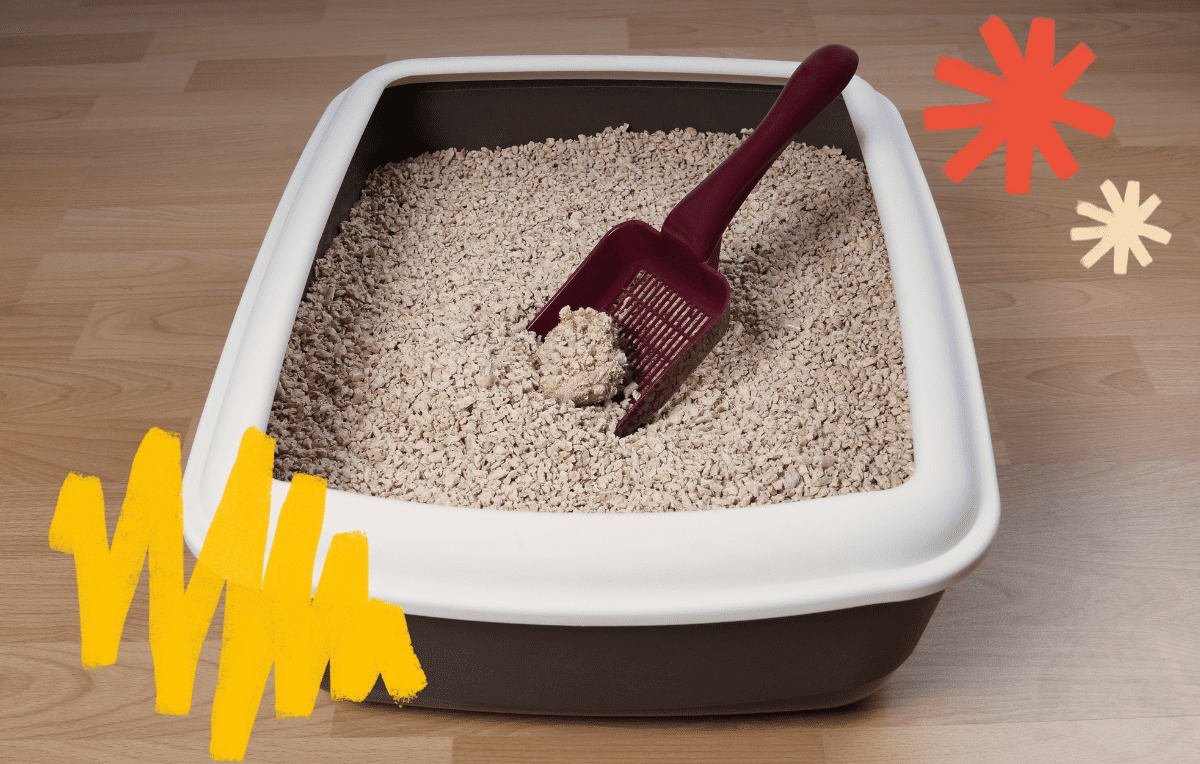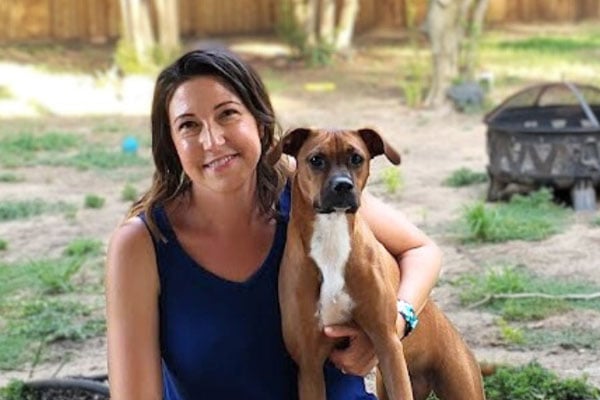
Hear us out – if a cat can learn to pee in a box, your dog can learn to pee in a box. So why not consider litter training your dog?
If taking your pup to take care of business involves multiple flights of stairs, that can get tiresome, and as a dog ages it can be hard on their joints. Some dogs will also refuse to go outside when it’s raining, snowing, or too cold outside.
Litter training can be a great way of teaching your four-legged friend good house habits. Plus, it’s a much more interesting party trick than the standard “sit” and “shake.”
With the right approach, litter training for dogs can be easy – it just takes patience, consistency, and positive reinforcement. In this blog post, we’ll explore the basics of litter training for dogs: what supplies you need, how to get started, tools for success, troubleshooting solutions – all with the goal in mind of making litter-box life as positive and easy as possible for everyone involved. Ready to dive in and learn about litter training your dog? Let’s get started!
At DOGTV, we like to be transparent: we have affiliate relationships with other companies. We may receive a commission on qualifying purchases made via the links in this article at no extra cost to you.
Litterbox Basics: Location, Type, Size and Substrate
If you were remodeling your home to add a bathroom, you wouldn’t build one in the middle of the living room. So be smart – when selecting a location, you’ll want to make sure it’s in an easily accessible spot – preferably one with low foot traffic.
You may be surprised but there are lots of great options available on the market today made specifically for dogs – from traditional plastic boxes to more stylish wooden ones.
As far as size goes, you’ll need something that is big enough to allow your dog to move around comfortably while they do their business – and get in and out without stepping in a fresh #2.
Finally, once you’ve chosen a box, fill it with substrate. Stay with us – substrate just means ‘material’ and you’re looking for something absorbent like shredded newspaper or natural dog litter (yes, it’s a thing!) so that any accidents can be quickly and easily cleaned up. You can also use potty pads, or even sod.
Litter Training Time
Now that you have the environment and the litter box all set up, it’s time to start training your pup! But how do you get them to actually use their designated potty area?
The answer is simple – rewards-based techniques and lots of encouragement. Start by showing your pup where they should go, then offer a reward every time they use their litter box correctly. This could be anything from verbal praise to treats or toys – whatever works best for your pup!
As you continue to train them, make sure to keep things fun and playful so that they stay motivated. With these positive reinforcement methods, your pup will soon learn what’s expected of them and begin using their litter box like a pro in no time.
Keeping it Clean
No matter the species, cleaning the litter box is an important part of keeping your pet’s potty area hygienic and inviting. But how often should you do it? And what should you do if there are any accidents?
Your cleaning regimen will depend on the absorbent material you’ve chosen – but we recommend you scoop the poop every time. If your pup has accidents outside their designated area, be sure to use an enzyme based cleaner. Otherwise your pup will keep returning to the same area.
Once your dog gets into a rhythm of successfully using the bathroom inside, you’ll be able to figure out how often to replace the substrate. As a rule of thumb, if your house starts to stink, you’ve waited too long. When in doubt, invite your brutally honest friend over – or your mother-in-law. If you have a litterbox odor problem, they will make sure that you know!
Troubleshooting Tips
If your pup is still having trouble getting the hang of their litter box, don’t worry! It’s all part of the process of litter training your dog. Here are a few troubleshooting tips that can help get them back on track:
Manage your expectations. Learning new skills takes time, so be patient and expect that you’ll encounter some accidents along the way. You should also make sure you’re providing plenty of rewards for good behavior – even if it’s just verbal praise or a pat on the head. Positive reinforcement is key when training your pup to use their designated potty area!
Try adjusting the size and location of the litter box to see what works best for your pup. If they seem hesitant to enter a larger space, then opt for something smaller.
Consider changing up the type and amount of absorbent material in their litter box – some pups may respond better to different textures or materials than others.
If you are committed to teaching your dog to handle their business indoors but they aren’t catching on, don’t be afraid to call in reinforcements. Seek out a certified dog trainer in your area who can help you. It may take some trial and error to find a good fit, but don’t let that deter you.
Dog trainers come in all shapes and sizes, but if they balk at your request to help with litter training – keep looking! As you’ve read, litter training dogs is really not that uncommon, and you want to find a trainer who will support you in your goals.
Key takeaways:
Litter training your dog may seem daunting, but with the right combination of patience, consistency and encouragement, you can help them understand the basics of indoor potty etiquette. If you find yourself struggling to stay on top of their litter box routine, don’t be afraid to reach out for help - many pet care experts offer guidance in proper pet potty behavior and can provide tips tailored to your pup’s needs.
Remember, any kind of training is a process, but with a little time and effort, your dog can learn when and where to use the litter box, saving you the need to manage his bathroom breaks. Any kind of training that requires fewer trips outdoors in bad weather is a slam dunk – so stay the course!

 Lindsay Millican
Lindsay Millican